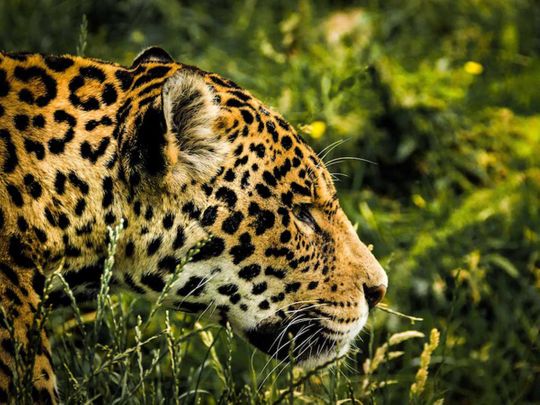
Islamabad: The killing of a common leopard, which is critically endangered in Pakistan, by the local people of Abbottabad has alarmed wildlife authorities.
The pictures of the leopard shared on social media drew anger from the concerned citizens and wildlife experts. However, the local residents said they had no choice but to kill the leopard that attacked a man named Malik Riaz. The man, a resident of village Pawa Sayal of Abbottabad, sustained injures on the legs, abdomen and arms and was shifted to district headquarters hospital Abbottabad for treatment, local officials said.
The increasing numbers of human-wildlife conflicts require the urgent implementation of strategies to protect both the people and the endangered animals, wildlife experts say. Talking to Gulf News, Muhammad Waseem, Manager Conservation at WWF-Pakistan, said that conservation strategies should be devised in a way that protects both the animal and the local people as well as their livestock and farms.
Human-wildlife conflicts are increasing due to growing human population increase, urbanisation, agriculture expansion, and deforestation in regions where people, livestock and wildlife share the same landscapes. In Pakistan, leopards occasionally prey on livestock, leading to conflicts which has led to lethal injuries to humans and retaliatory killing of leopards. So, how do we protect people and their livestock and crops from large carnivores while saving precious wildlife?
Pakistan’s national wildlife authorities need to urgently implement globally recognised mechanisms to reduce the conflict between humans and leopards such as “immediate compensation for losses of the livestock to local community and a comprehensive awareness raising campaign to change people’s perceptions and encourage them to protect animals” that play a vital role in keeping the ecosystem balanced, says Waseem. When people are offered incentives such as compensation or jobs, only then would they value the animals, he said.
Common leopard (scientifically known as Panthera pardus) is considered to be sparsely distributed across Pakistan and has a stable population. Leopard attacks on humans seldom occur in northern Pakistan where these animals are poisoned or shot in retaliation due to “lack of a policy to compensate the livestock owners for losses incurred which further undermine the leopard conservation by causing local people to resent leopards” according to a 2019 study authored by Muhammad Waseem. Other threats to leopards include poaching, trapping cubs for animal dealers, and the trade of body parts and skins, he added.
Besides financial compensation for local communities, experts suggest improved protection for livestock to deter leopards, habitat improvement and better forestation, the reintroduction of wild prey, to make human-wildlife coexistence possible.








